I never thought I'd find a vegan version of kaldereta that could match my grandmother's recipe, but this one changed my mind completely. The magic happens when peanut butter and miso paste come together to create that rich, savory sauce we all love in traditional kaldereta. Every time I make this for my family, the pot is scraped clean – even my uncle, who usually asks "where's the meat?" comes back for seconds.
If you're looking to eat more vegetables or just want to try something new while keeping those classic Filipino flavors you grew up with, this recipe is a must-try. It's perfect for Sunday family lunch, and it tastes even better the next day.
Jump to:
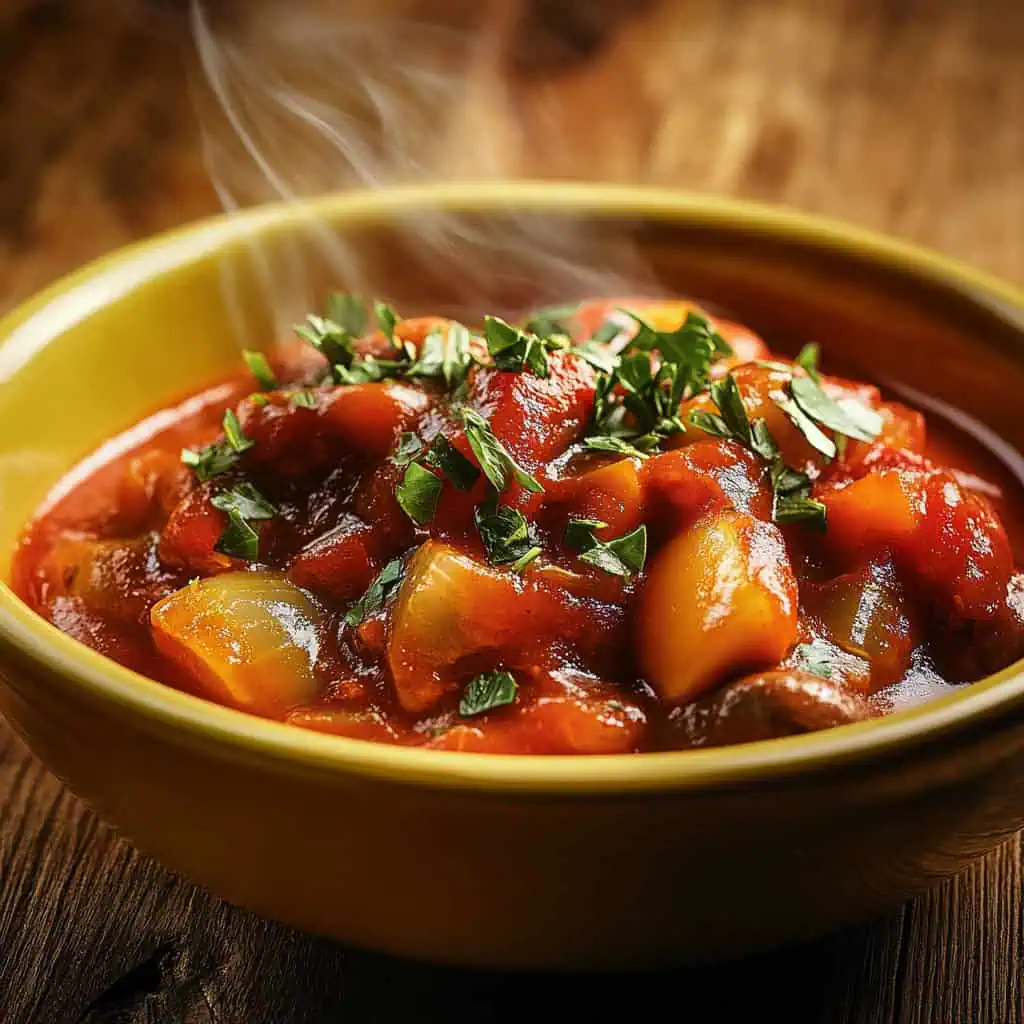
Why You'll Love This Recipe
- Authentically Filipino flavors without meat
- Rich, hearty sauce perfect for special occasions
- Customizable spice level
- Meal-prep friendly
- Budget-friendly ingredients
- Perfect for family gatherings
- Can be made in one pot
Ingredients
Each ingredient in this vegan kaldereta serves a purpose. Soy chunks mimic the texture of traditional meat while absorbing all the flavors. Peanut butter and miso paste work together to replace liver spread, creating that signature rich umami taste without animal products.
The combination of tomato sauce and paste forms the stew's base, while potatoes and carrots add heartiness. Bell peppers provide color and sweetness, and bird's eye chilies add that authentic Filipino heat.
Together, these plant-based ingredients recreate the complex, satisfying flavors of traditional kaldereta without compromising on taste or texture.
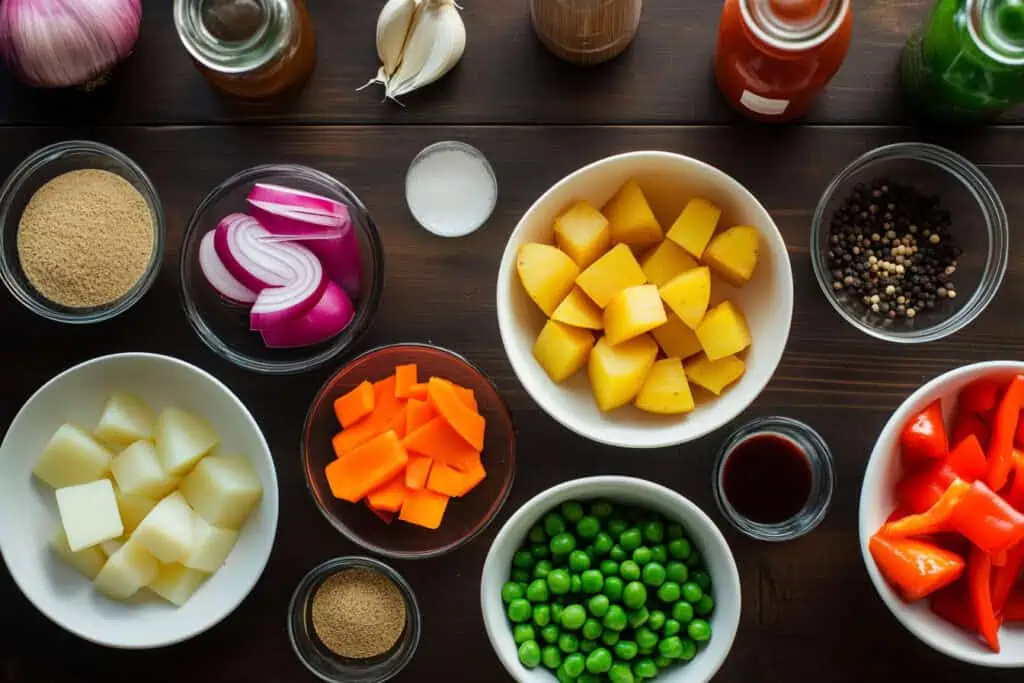
For the Protein (choose one):
- 150g dry soy chunks
- 550g plant-based meat substitute
- 550g extra firm tofu or tempeh
For the Stew:
- 2 medium potatoes
- 1 medium carrot
- 1 small red onion
- 4 cloves garlic
- 2 dried bay leaves
- 5 bird's eye chilies
- 3 cups vegetable broth
- 2 cups tomato sauce
- 1 tablespoon peanut butter
- 1 tablespoon miso paste
- 2 tablespoons tomato paste
- ½ cup green peas
- 1 small red bell pepper
- 1 small green bell pepper
- 2 tablespoons soy sauce
- Salt and pepper to taste
- Cooking oil
Equipment
- Dutch oven or large heavy-bottomed pot - For even heat distribution and preventing burning of the sauce
- Sharp knife - For precise vegetable cutting to ensure even cooking
- Cutting board - For safe preparation of ingredients
- Measuring cups and spoons - For accurate ingredient portions
- Wooden spoon - For gentle stirring without scratching the pot
- Colander - For draining rehydrated soy meat
- Heat-proof bowl - For rehydrating soy chunks safely
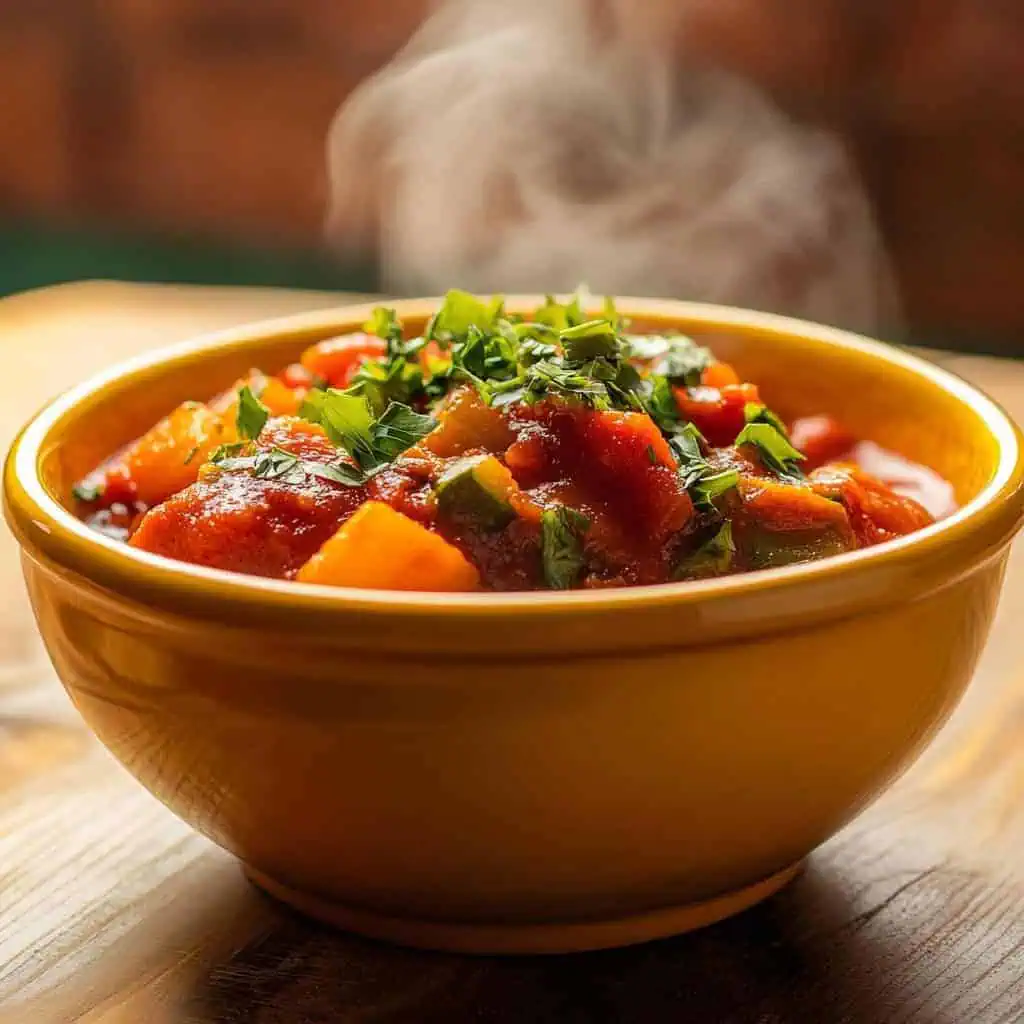
How To Make
- Begin by placing the dry soy chunks in a heatproof bowl and pour boiling water over them. Cover and let them sit for 15 minutes until doubled in size. While waiting, peel and cut your potatoes and carrots into 1-inch cubes. Keep the potatoes in cold water to prevent browning.
- Drain and squeeze out the excess water from your soy chunks, then rinse them under cold water. Set aside.
- Dice your onion, mince the garlic, slice the bell peppers into chunks, and prepare your chilies. If you want less heat, remove the seeds from the chilies.
- Heat oil in a dutch oven or large pot over medium-high heat. Add the potatoes and cook for 2-3 minutes until lightly golden on the edges. Remove and set aside.
- In the same pot, add onion, garlic, chilies, and bay leaves. Cook for 2 minutes until the onions become translucent and fragrant.
- Add the rehydrated soy chunks to the pot and cook for 3 minutes, stirring occasionally.
- Pour in the tomato sauce and vegetable broth. Add the peanut butter and miso paste, stirring until they dissolve completely into the sauce.
- Add the carrots, cover the pot, and let it cook over medium heat for 5 minutes.
- Stir in the tomato paste and season with soy sauce, salt, and pepper.
- Add the reserved potatoes, bell peppers, and peas. Cover and cook for 20-25 minutes, stirring every few minutes to prevent sticking. The stew is ready when the carrots and potatoes are tender.
- If the sauce becomes too thick, add more broth until you reach your desired consistency. Taste and adjust the seasoning with more salt if needed.
- Optional: sprinkle vegan cheese on top and let it melt slightly before serving.
- Serve hot over rice or your preferred grain.

Tips from Lola's Kitchen
- Pre-toast your potatoes before adding them to the stew. This extra step helps them maintain their shape and adds a nice texture contrast.
- Use native siling labuyo for authentic Filipino heat. These small but potent chilies give the dish its traditional warm kick.
- Let the peanut butter and miso fully dissolve before adding other ingredients. This ensures the flavors are evenly distributed throughout the sauce.
- Don't rush the cooking process. The magic of kaldereta comes from slow simmering, allowing the flavors to meld together.
- Allow the stew to rest for 10 minutes before serving. This resting period lets the flavors settle and intensify.
- Save potato peels for making crispy chips – zero waste cooking at its finest!
- Add vegan cheese at the end of cooking for a creamier, more traditional kaldereta texture.
Substitutions
- Soy chunks: Replace with mushrooms (especially oyster or king oyster), young jackfruit, or seitan for different textures and flavors.
- Peanut butter: Cashew butter or tahini can work well, though each will impart its own unique flavor profile.
- Fresh tomatoes: If tomato sauce isn't available, use 6-8 fresh tomatoes, blended, or canned diced tomatoes.
- Bird's eye chilies: Substitute with regular red chilies, jalapeños, or 1-2 teaspoons of chili flakes for a milder heat.
- Vegan cheese: Nutritional yeast can provide a similar savory quality if vegan cheese isn't available.
- Bell peppers: Roasted capsicum or additional carrots work well if bell peppers aren't in season.
- Miso paste: If unavailable, use 1 tablespoon of vegan Worcestershire sauce and a pinch of extra salt.
Troubleshooting
- Sauce is too thick: Add vegetable broth ¼ cup at a time until you reach your desired consistency.
- Sauce is too thin: Simmer uncovered for 5-10 minutes to reduce, or add 1 teaspoon of cornstarch mixed with 1 tablespoon of cold water.
- Potatoes are still hard: Cover and simmer for an additional 5-7 minutes. Make sure to cut them into evenly sized pieces.
- Too spicy: Add more vegan cheese or a splash of coconut milk to balance the heat.
- Sauce splits: Whisk in 1 tablespoon of smooth peanut butter to bring it back together.
- Vegetables overcooked: Next time, add softer vegetables like bell peppers in the last 10 minutes of cooking.
Storage & Reheating
- Refrigerator: Store in an airtight container for up to 3 days. The flavor actually improves overnight as the spices meld together.
- Freezer: Freeze without potatoes for up to 3 months. Potatoes can become grainy when frozen and thawed.
- Reheating: Warm slowly over medium-low heat, adding a splash of broth if needed to loosen the sauce. Stir occasionally to prevent burning.
- Make-ahead tip: Prepare the base sauce and protein without vegetables, then add fresh vegetables when reheating for the best texture.
- Portion tip: Freeze in individual servings for quick meal options. Thaw overnight in the refrigerator before reheating.
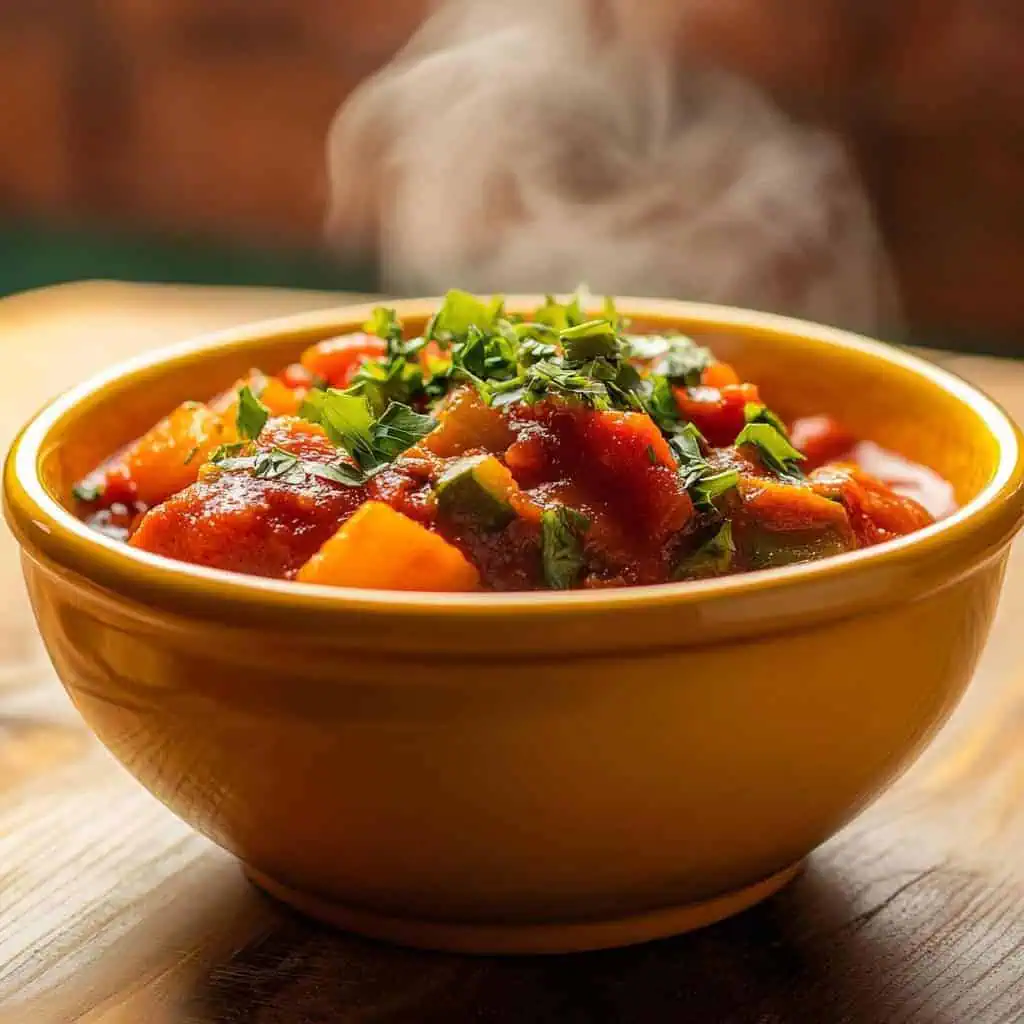
FAQ
Can I make this in advance for a party?
Yes, it actually tastes better the next day as the flavors have time to develop. Reheat gently on the stovetop, adding a little broth if needed.
Is this recipe gluten-free?
Yes, if you use gluten-free soy sauce and ensure your protein substitute is gluten-free. Always check labels for hidden gluten in broths and plant-based proteins.
How can I reduce the sodium content?
Use low-sodium soy sauce and vegetable broth, or reduce the amount. You can increase other seasonings like herbs and spices to maintain flavor depth.
Can I use regular butter instead of peanut butter?
No, peanut butter provides specific flavor and texture essential to this vegan version. Regular butter would create a very different dish and wouldn't offer the same protein-rich creaminess.
How spicy is this recipe?
With 5 bird's eye chilies, it's moderately spicy. Adjust according to your preference by reducing the number of chilies or removing their seeds for a milder version.
Can I make this in a slow cooker?
Yes! Cook on low for 6-8 hours or high for 3-4 hours. Add the bell peppers and peas in the last hour to prevent them from becoming mushy.
What's the best plant-based protein to use for beginners?
For beginners, extra-firm tofu is the easiest to work with. Press it well, cut into cubes, and follow the recipe as written.
How can I make this recipe oil-free?
Instead of oil for sautéing, use 2-3 tablespoons of vegetable broth or water. You may need to deglaze the pot occasionally with additional broth.
Related
Looking for other recipes like this? Try these:
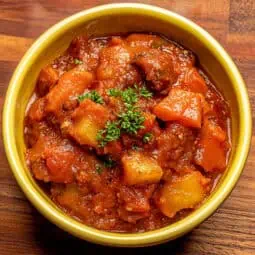
Vegan Filipino Kaldereta (Kalderetang Gulay)
Equipment
- Dutch oven or large heavy-bottomed pot For even heat distribution and preventing burning
- harp knife (Matalas na kutsilyo) For precise vegetable cutting
- Cutting board (Sangkalan) For safe preparation of ingredients
- Measuring cups and spoons (Panukat) For accurate ingredient portions
- Wooden spoon (sandok na kahoy) For gentle stirring without scratching the pot
- Colander (salaan) For draining rehydrated soy meat
- Heat-proof bowl For rehydrating soy meat
Ingredients
For the Protein
- 150 g dry soy chunks
- 550 g plant-based meat substitute kapalit ng karne
- 550 g extra firm tofu tokwa or tempeh
For the Stew
- 2 medium potatoes patatas
- 1 medium carrot karot
- 1 small red onion sibuyas
- 4 cloves garlic bawang
- 2 dried bay leaves dahon ng laurel
- 5 bird's eye chilies siling labuyo
- 3 cups vegetable broth
- 2 cups tomato sauce
- 1 tablespoon peanut butter
- 1 tablespoon miso paste miso
- 2 tablespoon tomato paste
- ½ cup green peas gisantes
- 1 small red bell pepper pulang bell pepper
- 1 small green bell pepper berdeng bell pepper
- 2 tablespoon soy sauce toyo
Instructions
- Begin by placing the dry soy chunks in a heatproof bowl and pour boiling water over them. Cover and let them sit for 15 minutes until doubled in size. While waiting, peel and cut your potatoes and carrots into 1-inch cubes. Keep the potatoes in cold water to prevent browning.
- Drain and squeeze out the excess water from your soy chunks, then rinse them under cold water. Set aside.
- Dice your onion, mince the garlic, slice the bell peppers into chunks, and prepare your chilies. If you want less heat, remove the seeds from the chilies.
- Heat oil in a dutch oven or large pot over medium-high heat. Add the potatoes and cook for 2-3 minutes until lightly golden on the edges. Remove and set aside.
- In the same pot, add onion, garlic, chilies, and bay leaves. Cook for 2 minutes until the onions become translucent and fragrant.
- Add the rehydrated soy chunks to the pot and cook for 3 minutes, stirring occasionally.
- Pour in the tomato sauce and vegetable broth. Add the peanut butter and miso paste, stirring until they dissolve completely into the sauce.
- Add the carrots, cover the pot, and let it cook over medium heat for 5 minutes.
- Stir in the tomato paste and season with soy sauce, salt, and pepper.
- Add the reserved potatoes, bell peppers, and peas. Cover and cook for 20-25 minutes, stirring every few minutes to prevent sticking. The stew is ready when the carrots and potatoes are tender.
- If the sauce becomes too thick, add more broth until you reach your desired consistency. Taste and adjust the seasoning with more salt if needed.
- Optional: sprinkle vegan cheese on top and let it melt slightly before serving.
- Serve hot over rice or your preferred grain. Leftovers can be stored in the refrigerator for up to 3 days or frozen for up to 3 months.
Tips from Lola's Kitchen
- Toasting potatoes before stewing helps them maintain their shape
- Use native siling labuyo for authentic Filipino heat
- Adding cheese at the end creates a creamier sauce
- Let the stew rest for 10 minutes before serving for better flavor
- Save potato peels for making crispy chips
Nutrition
The Story Behind Vegan Filipino Kaldereta
Kaldereta (also spelled caldereta) comes from the Spanish word "caldera," meaning cauldron or cooking pot. This connection isn't surprising since the dish arrived in the Philippines during the Spanish colonial period, bringing with it the European style of meat stews slow-cooked in thick tomato sauce. While the Spanish brought the cooking method, Filipinos made it uniquely their own by adding liver spread, creating that signature rich flavor that sets kaldereta apart from other tomato-based stews.
Originally, kaldereta was made with goat meat (kalderetang kambing), making it a special occasion dish in many Filipino regions. The goat meat was slow-cooked until tender, perfect for town fiestas and family celebrations. As the recipe evolved, home cooks started using beef, pork, and chicken, making it more accessible for everyday meals. The addition of potatoes, carrots, and bell peppers wasn't just for flavor – these vegetables helped stretch the dish to feed more family members, a practical solution that became a beloved part of the recipe.
Today, kaldereta continues to adapt to changing times and dietary preferences. This vegan version honors the traditional cooking method and rich flavors while making the dish accessible to everyone. By using clever substitutes like peanut butter and miso paste instead of liver spread, and plant-based protein instead of meat, it captures the essence of what makes kaldereta special – that thick, savory sauce that begs to be spooned over hot rice, and the tender chunks that soak up all the flavors during cooking.
In Filipino homes, kaldereta isn't just food – it's a symbol of celebration, family gatherings, and the creativity of Filipino cooks who can transform simple ingredients into something extraordinary. Whether served at a grand fiesta or a simple family dinner, it remains a testament to how Filipino cuisine continues to evolve while keeping its heart and soul intact.
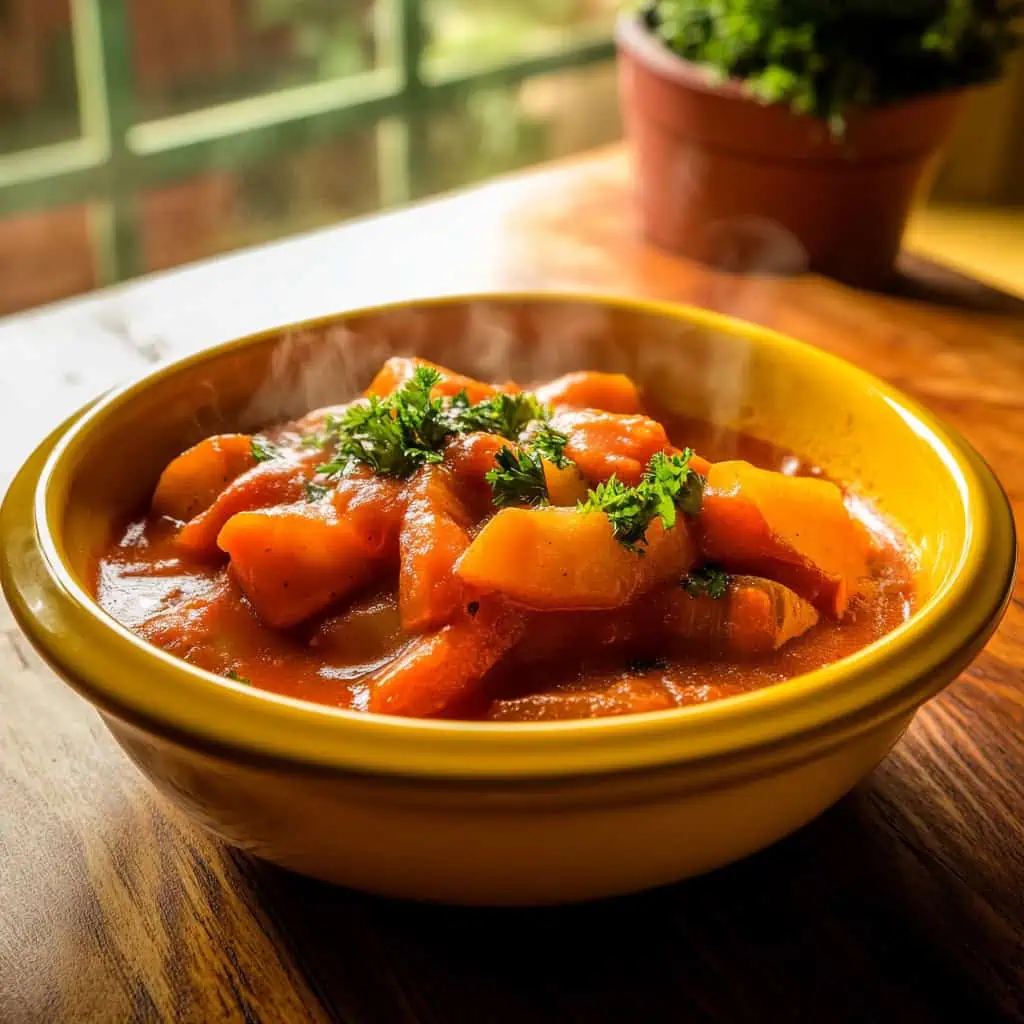

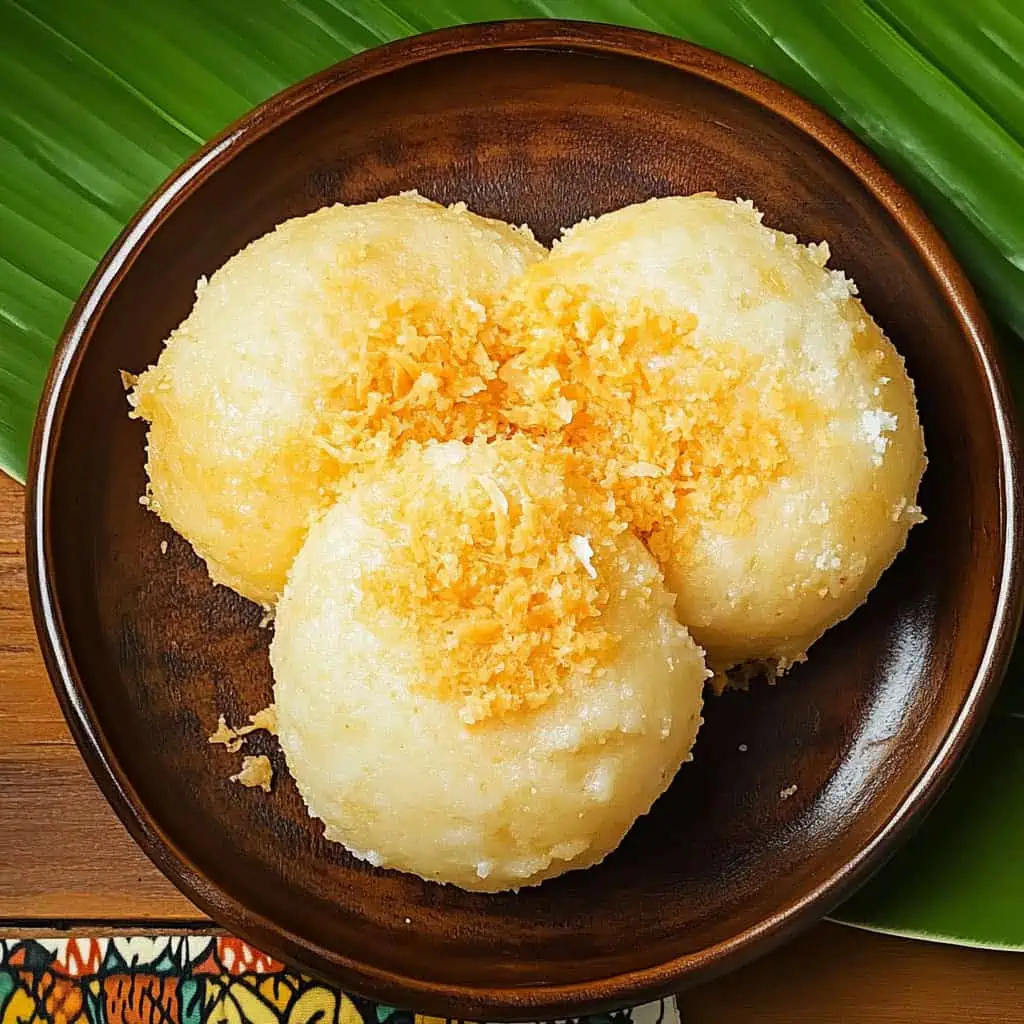
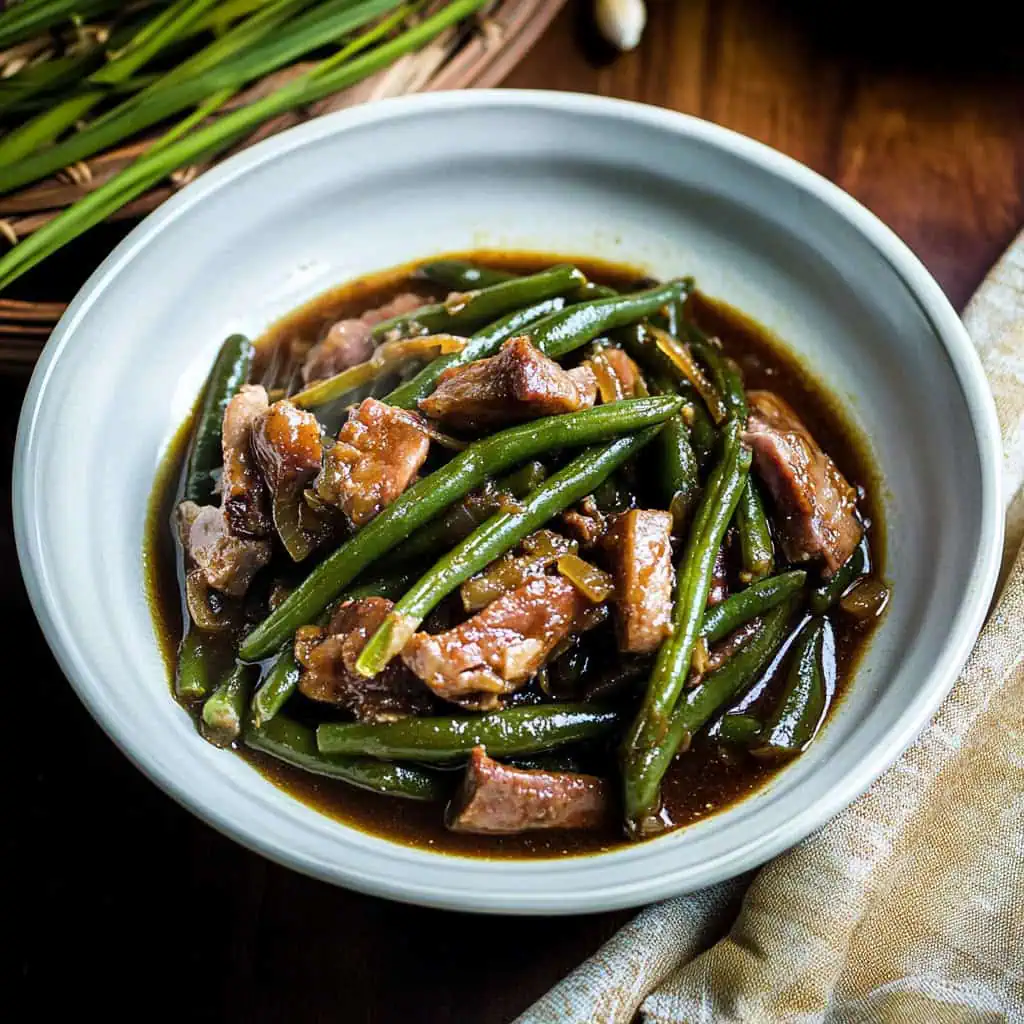
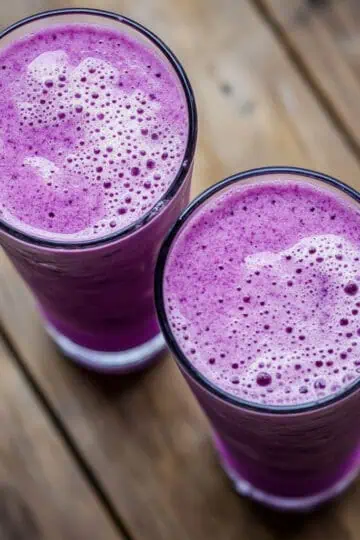
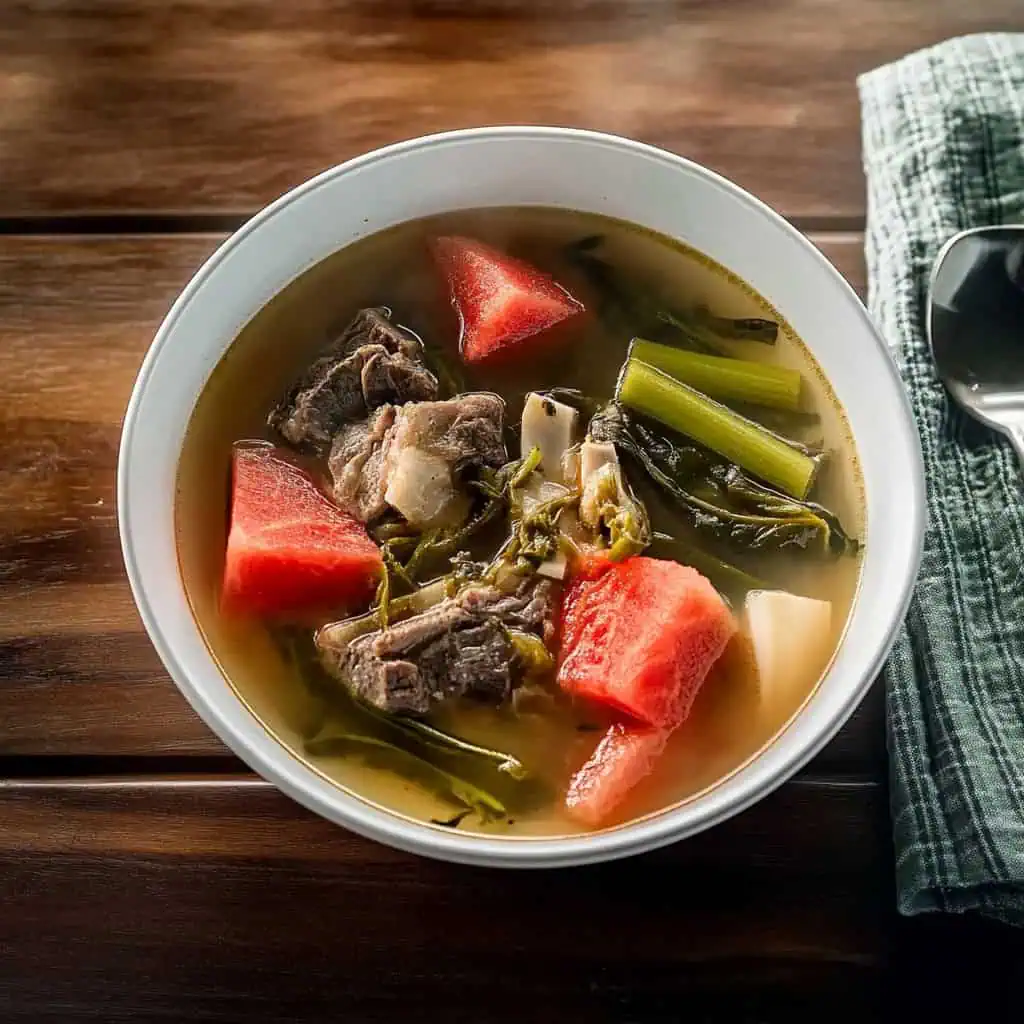

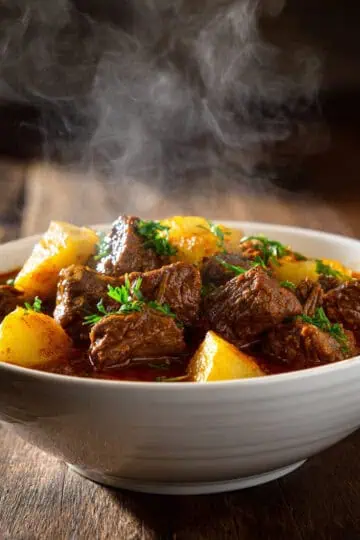
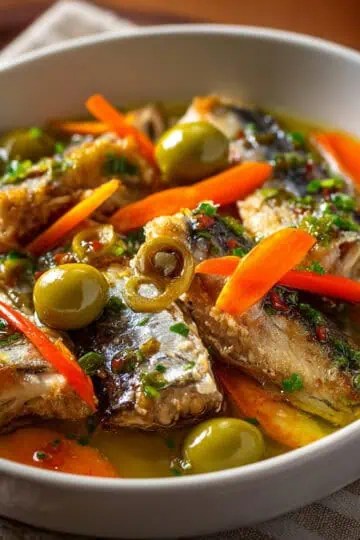
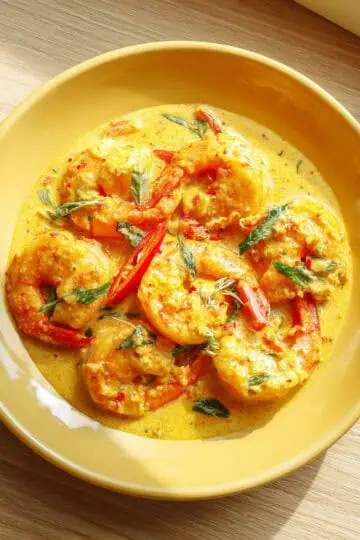
Comments
No Comments